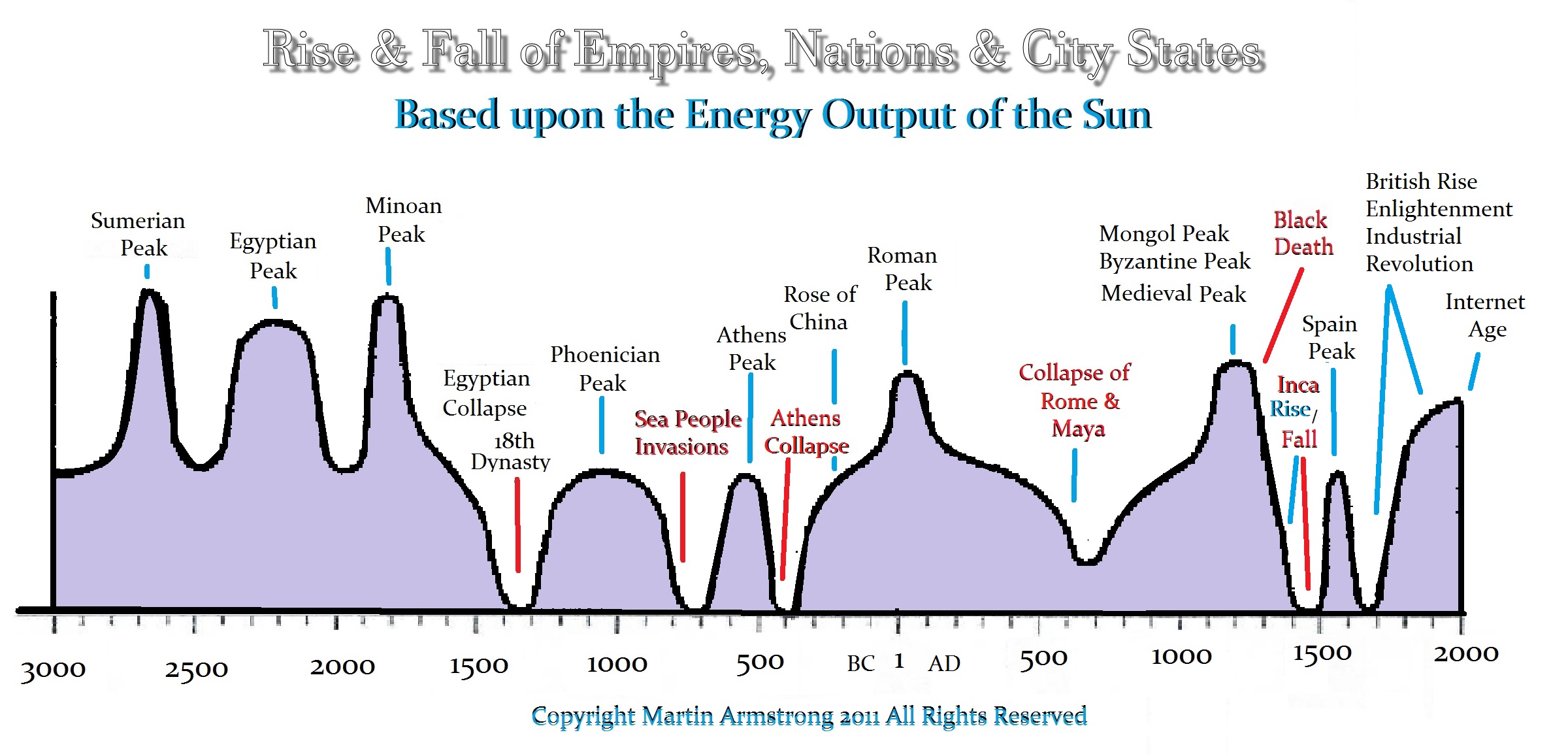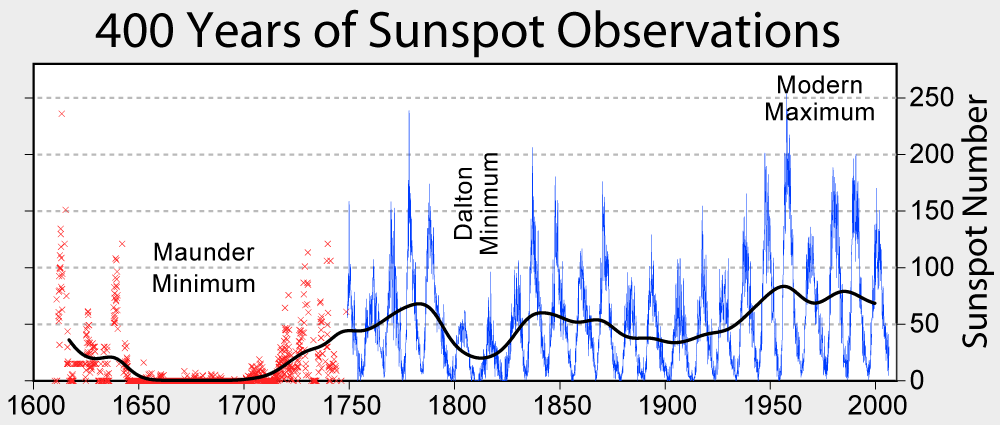Climate Change: Real – Fake – Exaggerated?
QUESTION: I find it interesting that you are against human-induced global warming yet you confirm that climate change is natural. You seem to be in the middle of these arguments. You warned that solar activity was declining and there was a risk of going into a mini ice-age, but you did not seem to place high odds on that one. So can you elaborate on this since you seem to be the voice of reason?
GR
ANSWER: Sunspot activity has declined on schedule. February was an incredible month void of sunspots. This is clearly contributing to the extremely cold weather we are having. Cyclically, between 1645 and 1715, there was a prolonged collapse in sunspot activity known as the Maunder Minimum. Indeed, that was a period where sunspots all but disappeared. This coincided with the “Little Ice Age,” which was a period from 1500 to 1850 in the northern hemisphere. It was so cold, Viking settlers even abandoned Greenland.
I have stated many times that a major error in analysis is the attempt to reduce a problem to a single cause and effect. This topic of climate change is no different. Many scientists have strongly suggested that the Maunder Minimum caused the Little Ice Age. As I have shown, correlating everything that took place revealed that during solar minimum there is also an increase in volcanic activity and earthquakes.
You will read that scientists seem to be debating between the two rather than comprehending that EVERYTHING is absolutely connected. We cannot reduce everything to a single cause and effect. Therefore, in order for me to confirm that we are heading into a new ice age requires more volcanic activity in addition to a prolonged solar minimum.

The sunspot cycle is also called the Schwabe cycle, and currently, we are moving toward the end of cycle 24. It does appear using long-term cycle analysis that cycle 25 will probably be at the very least a quieter cycle than we are concluding here with cycle 24. There’s been this steady decline, so we are indeed heading into what could be a prolonged solar minimum.
There have been several protracted solar minimums since 1000 AD:
- Oort minimum (1040–1080 AD)
- Medieval Minor minimum (1150–1200 AD)
- Wolf minimum (1270–1350 AD)
- Spörer minimum (1430–1520 AD)
- Maunder minimum (1620–1710 AD)
- Dalton minimum (1787–1843)
This post-Dalton minimum peaked strangely with the Economic Confidence Model on 1989.95. The peaks in solar activity have been declining with each wave subsequent to that turning point. It is now declining faster than ever previously known for nearly the last 10,000 years. Pretend scientists claim climate change is due to human activity. They were predisposed to arrive at that conclusion and not offer legitimate analysis whatsoever. Society expands during warming cycles and contracts during periods of global cooling (see chart above).
I have also warned that if next year is colder than the 2018/2019 winter, and if this summer ends up with an expansion of drought, then besides keeping an extra supply of canned goods, the short-term cycle would warn of a further cold period into 2024/2025. The problem here is that if governments can blame humans, then they can tax us. When something is natural, there is no one to tax or blame except Acts of God.
So YES, there is always climate change, but humans do not create it. There is far more complexity to this than a single cause and effect. REAL analysis cannot take place when the objective is always to reduce it to a single cause and effect.

